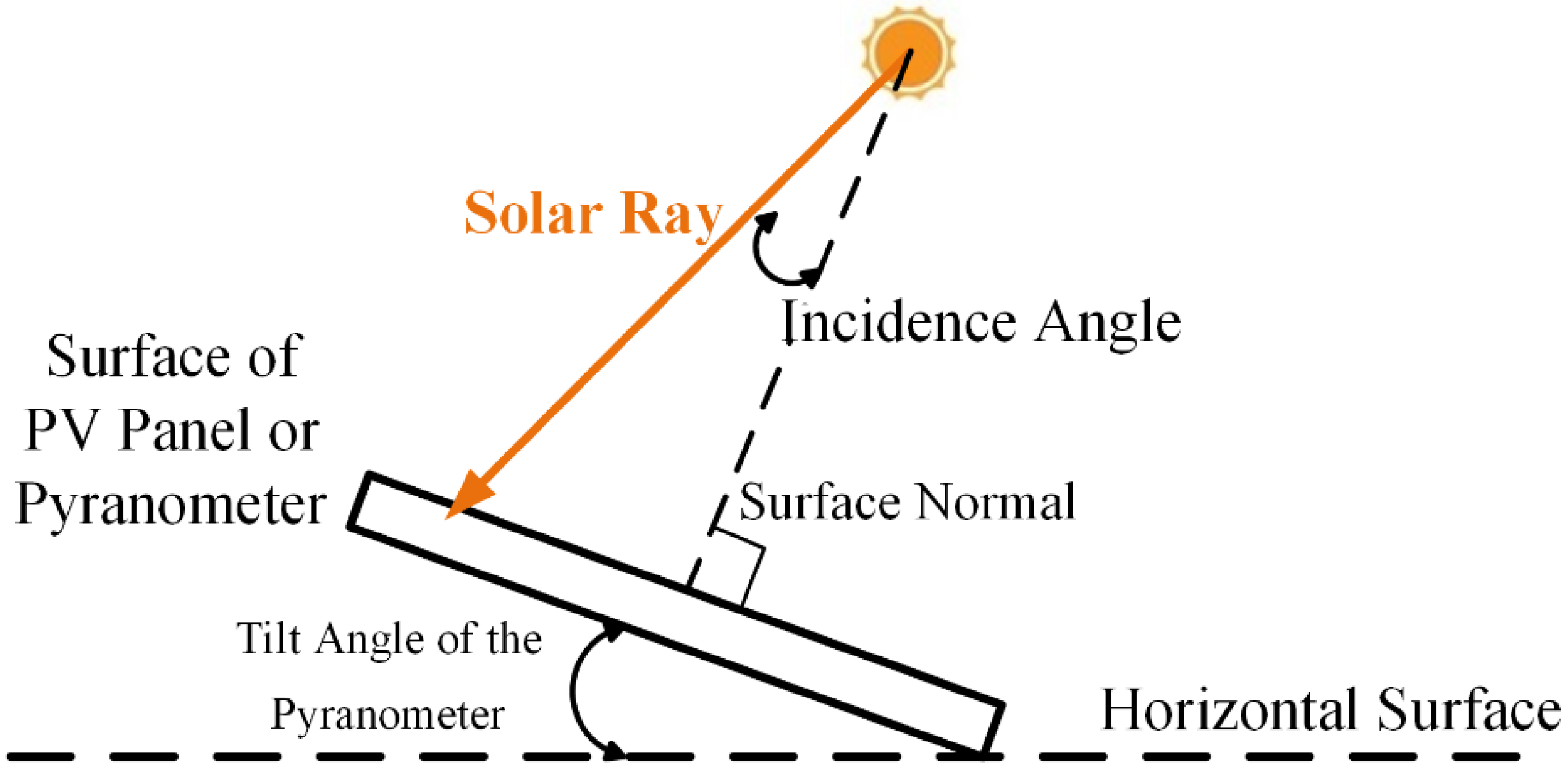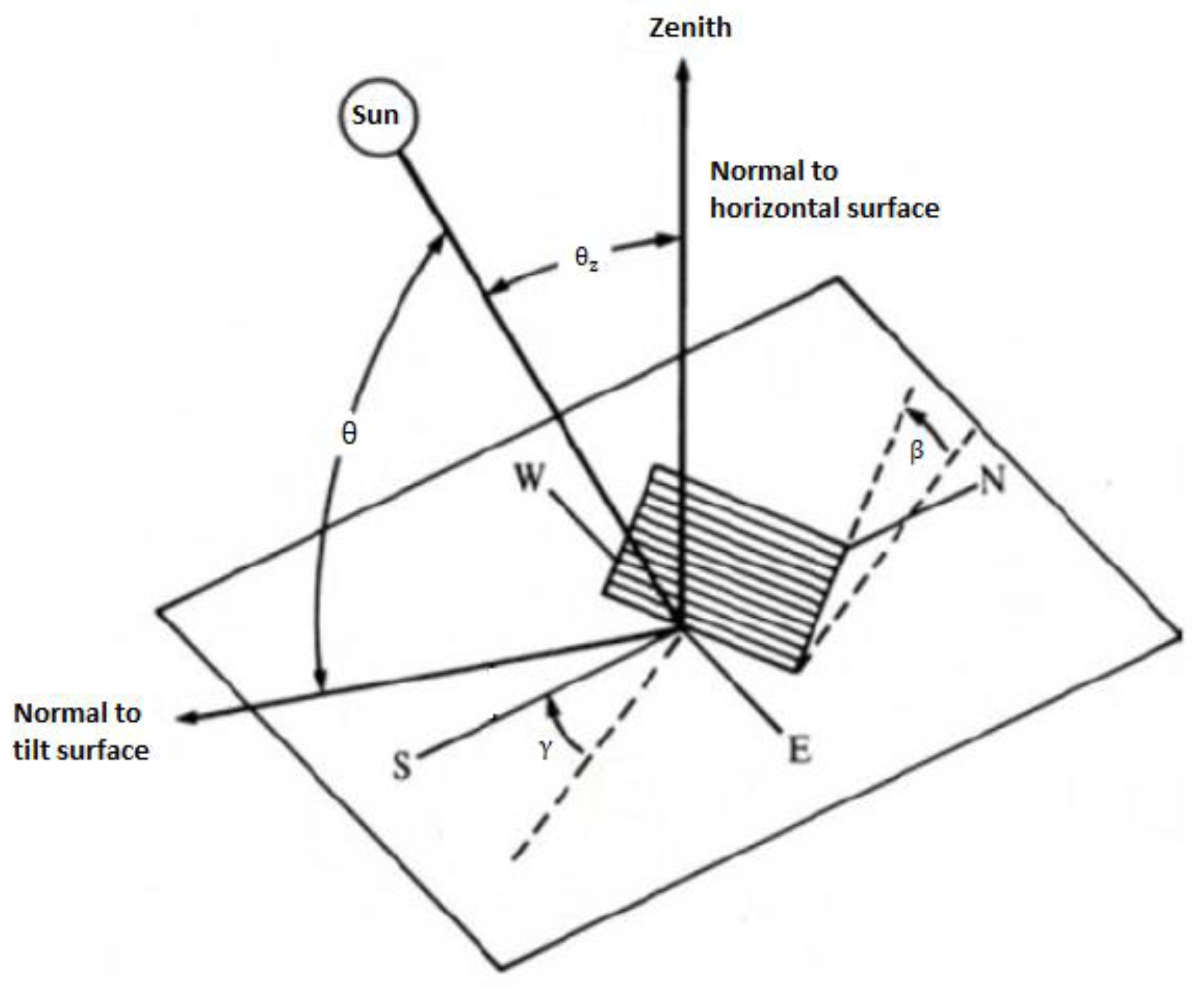
Source: MDPI
Solar Radiation Incident on PV Modules
The amount of solar radiation incident on a photovoltaic (PV) module is influenced by the angle between the module and the sun. When the module surface is perpendicular to the sunlight, the power density on the surface is at its maximum. However, as the angle between the sun and the module changes, the power density decreases.
Calculation of Incident Solar Radiation on Tilted Modules
The solar radiation incident on a tilted module surface is the component of the incident solar radiation that is perpendicular to the module surface. The calculation involves the elevation angle (α) and the tilt angle of the module (β) measured from the horizontal.
The relationship between the incident solar radiation on a tilted surface (Smodule), solar radiation on a horizontal surface (Shoriz), and solar radiation measured perpendicular to the sun (Sincident) can be determined using the following equations:
Shorizontal = Sincident sin α
Smodule = Sincident sin(α+β)
The elevation angle (α) is calculated based on the latitude (φ) and the declination angle (δ), which is a function of the day of the year.
Impact of Tilt Angle on Solar Radiation
The tilt angle of a PV module significantly affects the solar radiation incident on the surface. For optimal power generation over a year, the tilt angle is often set equal to the latitude of the location. Steeper tilt angles are beneficial for maximizing winter loads, while lower tilt angles utilize more light during the summer.
The simulation allows for the calculation of the maximum solar insolation based on latitude and module angle. Adjusting the latitude and tilt angle demonstrates how the amount of power received throughout the year varies.
Understanding the relationship between the tilt angle of PV modules and incident solar radiation is crucial for optimizing the efficiency and performance of solar energy systems.

Source: MDPI
Feel free to comment your thoughts.
